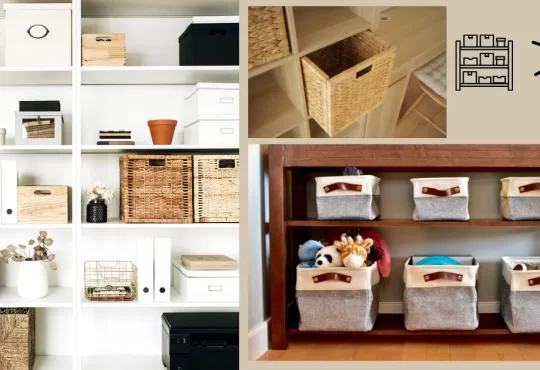Keeping a home cool can feel like a never-ending battle, especially when the weather gets hot and humid. Air conditioners work harder, electricity bills rise, and indoor comfort becomes harder to maintain. What many homeowners do not realize is that the roof plays a significant role in how efficiently a home stays cool. Smart roof ventilation can help reduce cooling costs, protect the roof structure, and improve overall comfort without relying solely on an air conditioner. The best part is that many ventilation upgrades are affordable, effective, and accessible in both old and new homes.
Roof ventilation manages how air flows through the attic. When hot air is allowed to escape and fresh air enters the space, the temperature inside the attic drops significantly. This reduces heat transfer into the living areas below. A properly ventilated roof can keep the attic up to 50 degrees cooler, leading to real energy savings. With the right strategies, homeowners can enjoy cooler indoor temperatures and a more efficient home even during peak summer heat.
Below are bright roof-ventilation ideas that can help cut cooling costs while extending the roof’s lifespan. Whether you are planning a renovation, building a new home, or simply looking to improve energy efficiency, these ideas will guide you toward practical, effective solutions.
Understanding Why Roof Ventilation Matters
Before diving into specific strategies, it is essential to understand why roof ventilation is such a powerful tool for saving on cooling costs. Heat rises, so the attic tends to become the hottest part of the home. During summer, attic temperatures can reach extreme levels. The hotter the attic becomes, the more heat radiates into the rooms below. This forces air conditioners to work longer and harder.
Ventilation prevents this heat buildup. By allowing hot air to escape and pulling in cooler outdoor air, the attic becomes a more stable environment. This preserves roofing materials, prevents moisture problems, reduces indoor temperature fluctuations, and creates a healthier home. With proper ventilation, homeowners often notice improvements in comfort and lower electricity bills.
Another advantage is that ventilation is a passive solution. Once installed, it operates continuously without electricity, except when powered vents are used. This means lower long-term costs and minimal maintenance.
10 Smart Roof Ventilation Tips to Save on Cooling
1. Use Ridge Vents for Balanced Airflow
Ridge vents are one of the most effective and widely recommended roof ventilation solutions. They run along the roof peak and allow hot air to escape through the highest point of the attic. This creates a natural airflow pattern that pulls cooler air through soffit or eave vents. Ridge vents blend well with roofing materials and do not affect the home’s appearance. They also distribute ventilation evenly, which helps maintain a consistent attic temperature.
Homeowners who choose ridge vents often notice the difference immediately during hot months. Since these vents operate naturally without electricity, they provide an energy-efficient and reliable option. For even better performance, pairing ridge vents with continuous soffit vents creates a balanced system that keeps air circulating smoothly throughout the attic.
2. Install Soffit Vents for Fresh Air Intake
Soffit vents are placed along the underside of the roof’s overhang and are essential for allowing cool outdoor air into the attic. Without proper intake ventilation, hot air cannot escape efficiently. Think of soffit vents as the lungs of the roof ventilation system. They promote airflow that pushes heat upward toward the ridge vents.
There are several types of soffit vents, including continuous vents that run the length of the eave and individual rectangular or circular vents spaced at intervals. Continuous soffit vents generally offer better airflow and help ensure a more uniform cooling effect. Well-installed soffit vents can dramatically lower attic temperatures and prevent moisture buildup, which is essential in humid climates.
Before installing soffit vents, homeowners should ensure that attic insulation is not blocking them. Baffles or rafter vents can be added to keep the airflow unobstructed. This simple upgrade can improve energy efficiency and reduce cooling costs.
3. Try Solar-Powered Attic Fans for Extra Cooling
For homes that struggle with extreme attic heat, solar-powered attic fans provide an additional boost. These fans use sunlight to power a motor that pulls hot air out of the attic more quickly. Since they rely on solar energy, they cost nothing to operate once installed. They are invaluable in areas with long hours of direct sunlight.
Solar attic fans can dramatically lower attic temperatures, reducing the amount of heat that enters the living space. This leads to noticeable savings on cooling costs. Some models come with adjustable settings, thermostats, or humidistats that automatically activate the fan based on temperature or moisture levels. This helps maintain an optimal attic environment year-round.

Solar attic fans work best when paired with soffit vents so the airflow has a clear path. If the attic has insufficient intake ventilation, the fan may struggle to perform effectively. When installed correctly, these fans can be a powerful solution for homes with persistent heat issues.
4. Consider Smart Attic Fans with Automated Controls
Technology continues to transform home improvement, and roof ventilation is no exception. Smart attic fans are becoming increasingly popular because they combine mechanical ventilation with modern convenience. These fans can be controlled via a smartphone app and feature sensors that monitor temperature and humidity in real time.
With automatic controls, smart attic fans turn on only when needed, preventing wasted energy. For example, the fan can activate only when the attic reaches a specific temperature. This keeps the space cooler without running the fan continuously. Some models also integrate with home automation systems for more personalized control.
Smart attic fans are ideal for homeowners who want a hands-off solution that maximizes energy efficiency. They can help protect roofing materials and reduce cooling costs by regulating the attic environment more precisely than traditional fans.
5. Add Gable Vents for Improved Cross Ventilation
Gable vents are installed on the exterior walls near the gable roof peak. They help promote cross ventilation by allowing hot air to escape through one side while cooler air enters through the other. These vents can be decorative or functional, depending on the design, and can enhance the home’s overall look.
While gable vents are not as efficient as ridge and soffit vents, they offer a helpful upgrade for older homes that cannot support continuous ridge ventilation. When combined with other vent types, gable vents improve airflow and help keep the attic cooler. In some homes, they help reduce moisture buildup and prevent mold or mildew growth.
Gable vents work best when wind patterns are favorable because they rely on natural breezes to move air in and out. Homeowners living in windy regions may find gable vents especially compelling.
6. Use Turbine Vents to Boost Air Movement
Turbine vents, also known as whirlybirds, are a classic ventilation solution that many homeowners still rely on. These vents contain spinning turbines that rotate with the wind. As they spin, they draw hot air up and out of the attic. Turbine vents are low-cost, easy to install, and require no electricity.
Although turbine vents depend on wind to operate efficiently, they can still provide a significant boost to airflow on breezy days. For homes with limited ventilation, adding one or two turbine vents can help reduce attic temperatures and ease the air conditioner’s load.
Modern turbine vents are more durable and quieter than older models. Some also use sealed bearings that prevent squeaking and require less maintenance. When paired with proper intake ventilation, turbine vents can effectively improve attic cooling.
7. Improve Attic Insulation Alongside Ventilation
Ventilation works best when paired with sound attic insulation. While ventilation cools the attic by moving air, insulation slows the transfer of heat into the living areas. Together, they create a more comfortable indoor environment and lower energy bills.
Upgrading attic insulation can prevent cool air from escaping during summer and keep warm air inside during winter. Fiberglass batts, blown-in cellulose, and spray foam are standard options. Homeowners should choose the right R-value based on their climate. A well-insulated attic helps maximize the impact of roof ventilation and reduces the strain on cooling systems.
Proper insulation also prevents condensation, which can lead to mold growth. Before installing new insulation, ensure the soffit vents remain unobstructed. Installing baffles helps maintain open airflow channels.
8. Seal Air Leaks to Reduce Heat Transfer
Air leaks in the attic can allow hot outdoor air to seep into the home. These leaks make cooling systems work harder and decrease ventilation efficiency. Common leak points include around ductwork, chimneys, attic hatches, and recessed lighting.
Sealing air leaks with weatherstripping, foam sealant, or caulk can significantly reduce heat transfer. When combined with proper ventilation, sealing leaks keeps the home cooler and more energy efficient. Homeowners often notice improved comfort and lower cooling costs within weeks of addressing air leaks.
This step also enhances indoor air quality by preventing dust, allergens, and pollutants from entering the living space through attic gaps.
9. Use Radiant Barriers to Reflect Heat
Radiant barriers are reflective materials installed in the attic to reduce heat gain. They work by deflecting radiant heat from the roof, keeping the attic cooler. These barriers are particularly effective in hot climates where the sun’s heat is intense throughout the day.
When combined with ventilation, radiant barriers can significantly reduce cooling costs. They help maintain a stable attic temperature and reduce the amount of heat that reaches the living areas. In addition to lowering energy costs, radiant barriers can help prolong the lifespan of roofing materials by reducing thermal stress.
Although radiant barriers require an upfront investment, many homeowners find the long-term energy savings worth the cost. They are invaluable on metal roofs, which tend to absorb more heat.
10. Explore Cool Roof Materials to Reduce Heat Absorption
While not strictly a ventilation method, cool roofing materials play a significant role in lowering attic temperatures. Cool roofs reflect more sunlight and absorb less heat. Options include reflective shingles, light colored tiles, and metal roofing with special coatings.
Cool roof materials help reduce the initial heat load that the ventilation system must handle. When used alongside proper ventilation, they contribute to significant reductions in cooling costs. Homeowners in warm regions often see the greatest benefits.
Choosing a cool roof during a renovation or roof replacement can be a big step toward long-term energy efficiency. Some cool roofing materials also qualify for rebates or tax incentives, depending on location.
Signs Your Roof Ventilation Needs an Upgrade
Even if a home already has some level of ventilation, it may not be performing as well as it should. Signs of poor roof ventilation include extremely hot attic temperatures, high electricity bills, peeling roof shingles, musty odors, mold or mildew growth, and uneven indoor temperatures.
If you notice these signs, it may be time to upgrade or add new ventilation components. Improving ventilation can enhance indoor comfort, extend the lifespan of roofing materials, and provide long-term savings on cooling costs.
Practical Tips for Maintaining Roof Ventilation Systems
Once ventilation is installed, regular maintenance ensures it continues to work efficiently. Dust, debris, and insulation can block vents over time. Periodically inspecting and cleaning attic vents as needed can help maintain airflow. Homeowners should also check for damaged screens, rust, or loose components.
For powered attic fans, cleaning the blades and checking electrical connections can prevent overheating or mechanical problems. Keeping gutters clean also helps prevent moisture issues that can affect ventilation.
Making ventilation maintenance part of your seasonal home care routine keeps the system performing at peak level and helps prevent costly repairs in the future.
Bringing It All Together for a Cooler Home
Smart roof ventilation is one of the most effective ways to save on cooling costs and improve overall home comfort. With the right combination of ridge vents, soffit vents, fans, radiant barriers, and insulation, homeowners can enjoy a cooler living environment without relying too heavily on air conditioning. These solutions not only reduce energy bills but also protect the roof and extend the life of building materials.
Whether you choose simple passive vents or advanced innovative ventilation systems, each upgrade brings your home closer to optimal efficiency. Start with a basic evaluation of your attic’s airflow and take it from there. A cooler, more energy-efficient home is absolutely within reach.





